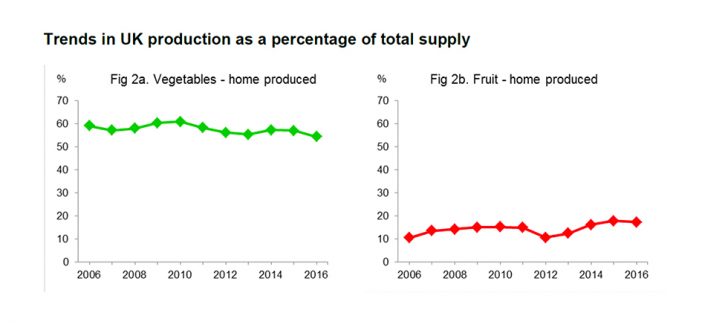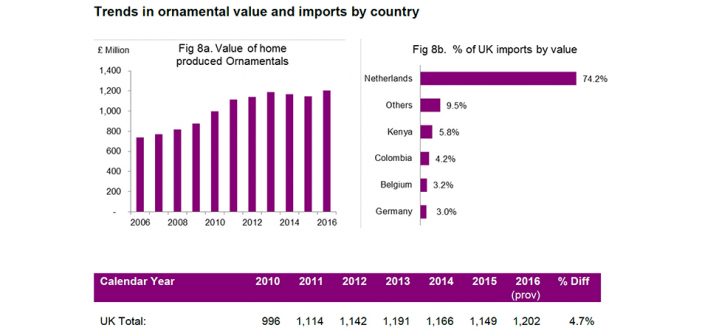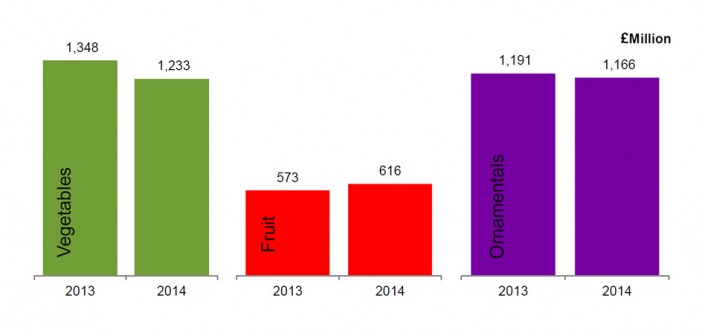Defra’s annual summary of UK horticulture shows mixed fortunes for the vegetable, fruit and ornamental sectors, with the value of field vegetables rising while protected veg and fruit fell.
The data shows that home produced vegetables were worth £1.3 billion in 2016, up 7.5% on 2015, although overall production fell by 5.2%. There was an increase in the value of field vegetables, which rose to £990 million (a £107 million increase) whilst the value of protected vegetables fell to £353 million (a £13 million fall). UK grown fruit fell in value to £670 million, a fall of 3.7% compared to 2015, with production at the same level as last year. The fall in value was largely driven by price, with a fall in the value of soft fruit due to a later start to the soft fruit season and a fall in production when compared to 2015.
Home production of vegetables contributed to around 54% of the total UK supply in 2016, 4.6% lower than in 2015. Home production of vegetables fell by 5.2% to 2.6 million tonnes. However, over the last 20 years total production of vegetables remains fairly constant between 2½ and 3 million tonnes. Overall, total supply was down 0.6% to 4.9 million tonnes. This is the first fall in total supply for 4 years.
For fruit, UK production contributed 17% of the total UK supply of fruit in 2016, 3.4% lower than in 2015, but home produced apples increased their share of the market to 42% a 6.8% increase on 2015. This was due to an increase in home production and a reduction in exports when compared to 2015. The total supply of fruit rose by 3.5% to 4.5 million tonnes in 2016.

Photo Credit: Defra
The post Latest statistics show mixed fortunes for UK horticulture appeared first on Hort News on 28 Sept 2017.

